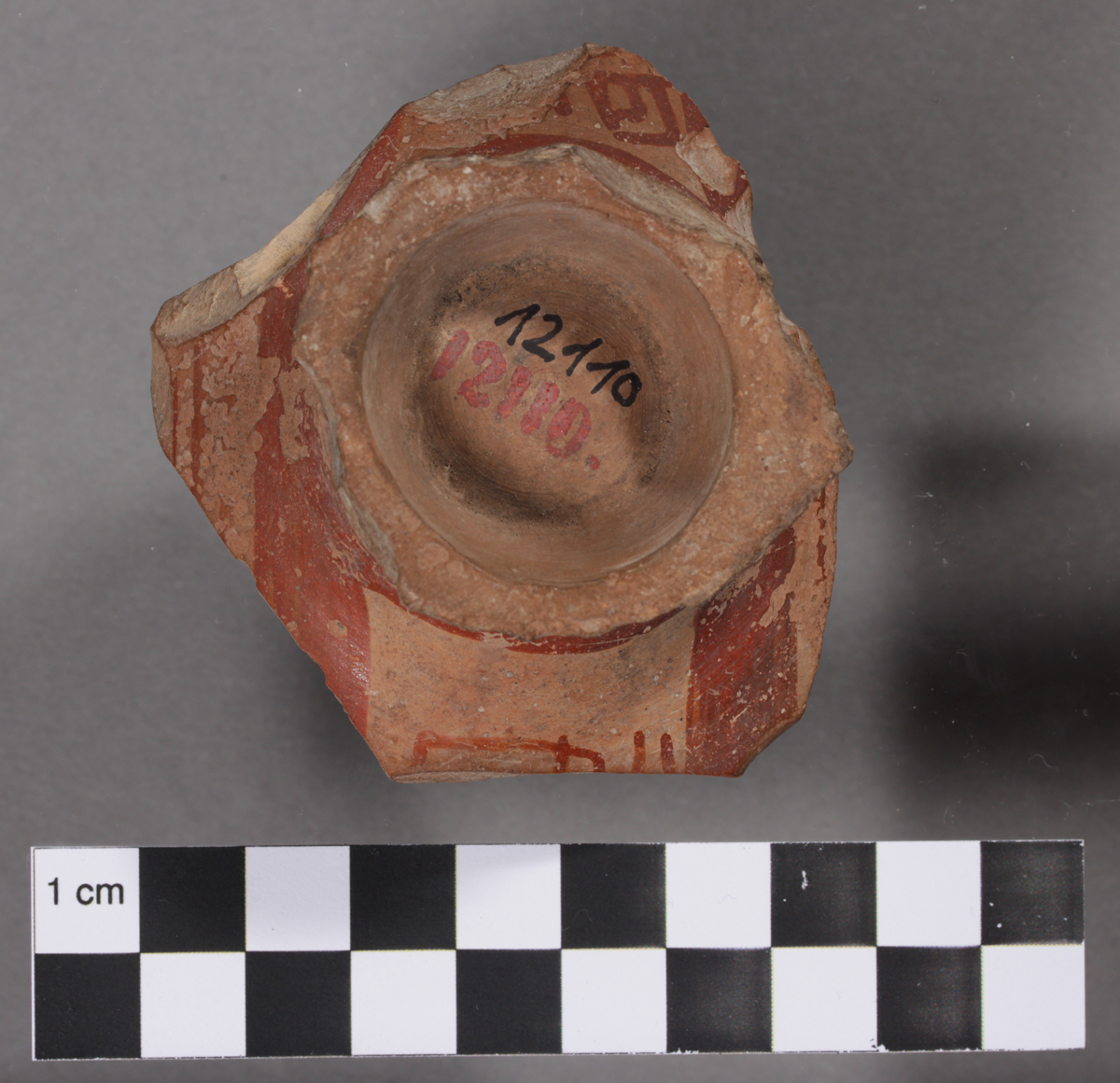The thesis deals with the economic interdependences of the city of Tell el-Amarna within Egypt itself, the Mediterranean area and the Ancient Near East on the basis of the relevant pottery
Research
While similar studies have been undertaken with glass and faience (see research project (A-6-9) Tell el-Amarna) and other materials from Tell el-Amarna, the focus will be a study of the complexity of the trade within Egypt with essentially agricultural products such as wine and oil, which were transported in particular vessels, such as large transport Amphorae or smaller stirrup Jars, originating from the Mycenaean Area. The main question is how the people of Amarna were provided with imported agricultural products both from Egypt, but also from the Eastern Mediterranean. In order to establish the precise production area of the transported products, the origin of the clay used for the ceramics shall be analyzed.
In terms of object documentation and analyses, the PhD Project is divided into two sections: On the one hand the Mycenaean pottery from past British excavations as international imports to Amarna will be studied, and on the other hand the hieratic Jar labels from the same source (Petrie, Borchardt, EES) as „national“ imports into Amarna.
The main corpus of the investigation and analysis will be the stock of Amarna pottery in the Egyptian Museum of Berlin, which forms the largest collection from Amarna outside Egypt. It is planned to document and analyze (including chemical analyses such as Neutron Activation Analysis (NAA) as well as petrographic studies).
All objects are mainly unpublished. The main aim is to join all Mycenaean sherds and hieratic jar labels from the further and recent excavations at Amarna to produce a complete corpus, which will then be examined under the following aspects:
- spatial distribution in Amarna, if a specific house is available as provenance (GIS)
- analysis and interpretation of the hieratic inscriptions (consumption, quantitative analysis based on the mentioned annual details, contents, names and institutions)
- analysis and interpretation of the decorative patterns on Mycenaean sherds in order to determine whether they were produced in a simple manner, solely for the purpose of export)
- chemical analysis including Neutron Activation Analyses (NAA) could be used on Mycenaean pottery to determine a specific geographical area in which the pottery was produced
- petrographic studies could be used on hieratic jar labels to compile groups; furthermore, the pottery groups will have to be analyzed in order to determine their original production area.
It is generally assumed that the manufacture of transport vessels as well as the production and processing of export products took place in the same area. Therefore this project aims to identify specialized workshops for cultivated products, if possible. The results of the studies will enable a discerning analysis of the economic system of Amarna during the New Kingdom. This leads to further studies not only concerning the manner of trading agricultural goods but also the economic relationship between different trade partners. Therefore, the various theoretical aspects of ancient Egypt’s economical system during the New Kingdom will be discussed.
This doctoral thesis is written within the doctoral program “Material Culture and Object Studies” (MaCOS) by the Berlin Graduate School of Ancient Studies (BerGSAS).

